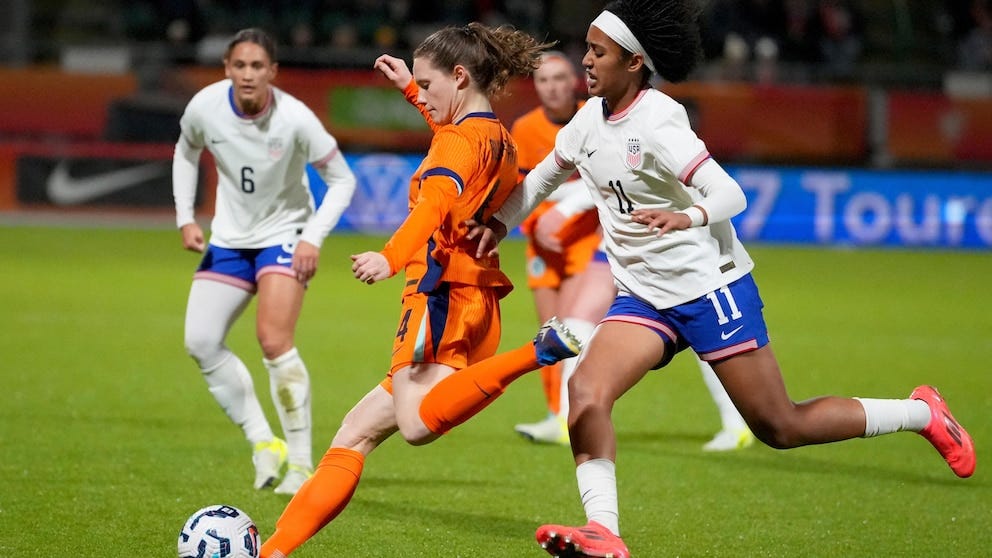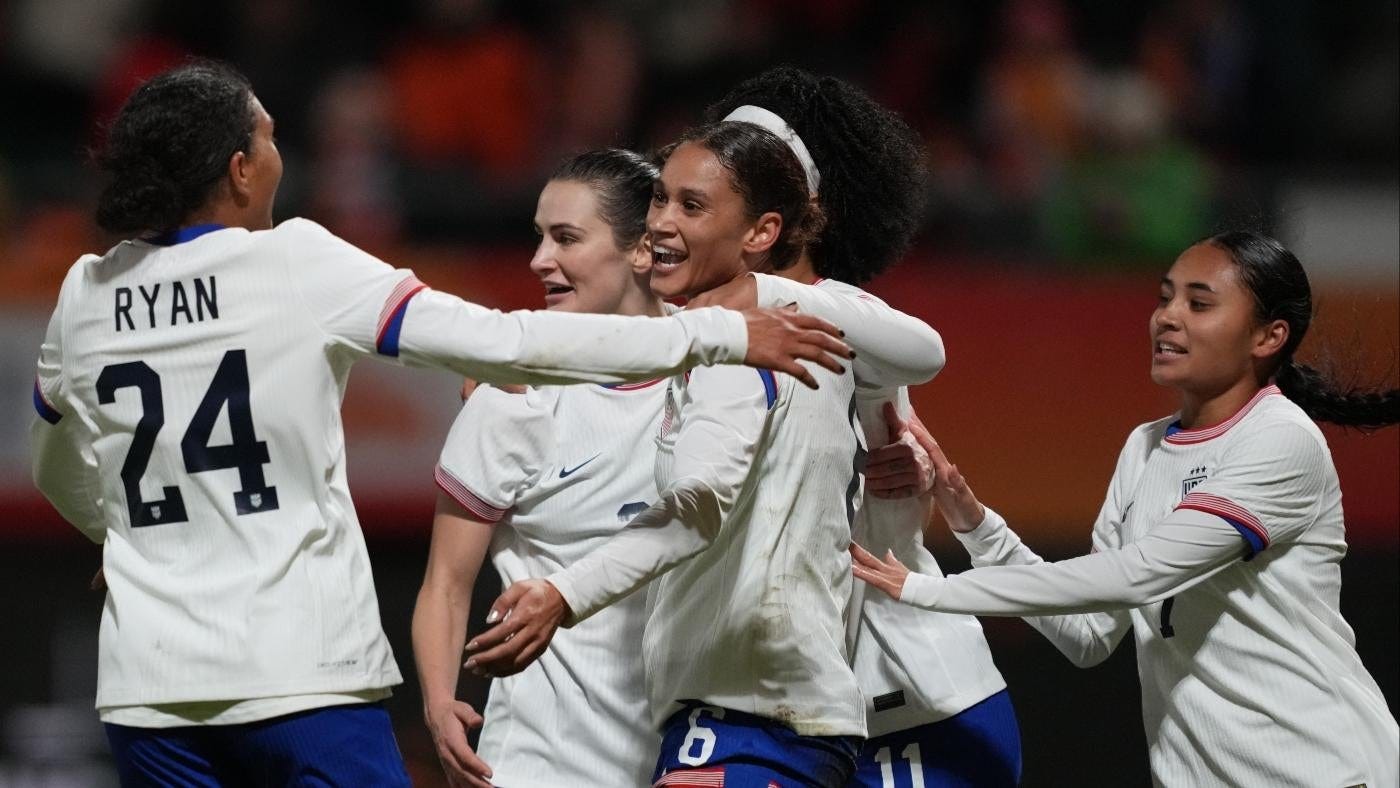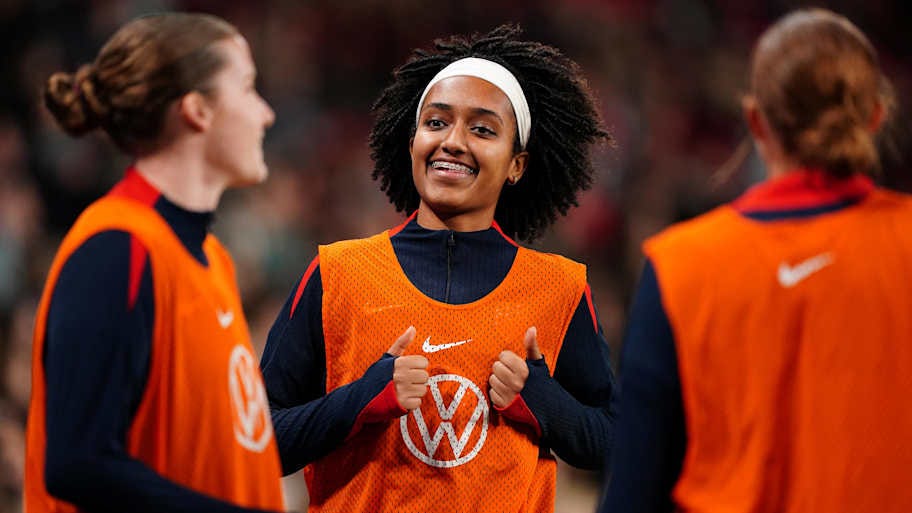Tuesday night in The Hague wasn’t just another game for the United States women’s national team. It was the closing chapter of a career that shaped an era. Alyssa Naeher, the unflappable goalkeeper who so often stood as the last line of defense for the USWNT, played her final international match, bowing out with 115 caps, 69 (nice) shutouts, and a legacy that will resonate long after her gloves are hung up.
The match itself? A 2-1 win over the Netherlands, tactical tinkering, and glimpses of what might be next for a US team in transition. But for all the narrative threads woven into this game, it was Naeher’s presence—and the saves she made—that defined it. Isn’t that exactly how she would’ve wanted it?
A Shaky Start
For a game meant to celebrate Naeher’s career, the US women’s national team seemed determined to make things difficult for her in the early going. Emma Hayes, in one of her boldest tactical experiments yet, pushed Rose Lavelle out to the left wing, leaving a midfield trio of Sam Coffey, Korbin Albert, and Lindsey Horan to manage the engine room. Spoiler alert: they didn’t.
The Dutch pressed with intent, forcing the U.S. into uncharacteristic mistakes. In the 11th minute, those cracks turned into a full-blown fissure. A Dutch corner curled into the box, and Albert lost her marker, 18-year-old Veerle Buurman, who rose above the pack to send a looping header past Naeher. It wasn’t a howler from the goalkeeper by any means—Buurman’s effort was well-placed—but it was the kind of defensive lapse that has plagued the US of late.
What was going on in midfield? Coffey and Albert struggled to cope with the Dutch press, and Horan, usually the metronome of this team, couldn’t seem to find her rhythm. Out wide, Jenna Nighswonger endured a torrid first half, consistently beaten down her flank. It felt like the US was teetering.
A Gift and a Reset
But as so often happens in soccer, the game’s cruel symmetry came into play. In the 44th minute, the Dutch gave the US a lifeline. Buurman, who had so brilliantly scored at one end, misjudged a clearance at the other, inadvertently heading the ball into her own net. Suddenly, the US had momentum heading into the break.
Was it deserved? Not entirely. The first half had been disjointed at best, chaotic at worst. Yet the scoreboard read 1-1, and Hayes had the chance to reset her team.
Emma Hayes has never been afraid to make bold moves, and her halftime adjustments reflected that. Lynn Williams came on for Jaedyn Shaw, injecting pace and directness (read: verticality) into the attack. Emily Sonnett replaced Nighswonger, allowing Emily Fox to shift to her natural left-back position. Most importantly, Lavelle dropped deeper into midfield, where her creativity could actually influence the game.
The impact was immediate. The US began to control the ball more effectively, and the defense—so exposed in the first half—looked more organized. And then came the moment that felt inevitable: Lynn Williams, one of the most reliable goal-scorers in the squad, delivered.
In the 70th minute, Yazmeen Ryan, a tireless force on the right wing, whipped in a dangerous cross. Williams timed her run perfectly, splitting two defenders before calmly slotting the ball home. It was a quintessential Williams goal—smart movement, clinical finish, and a celebration that oozed confidence.
Is there a player on this roster more dependable in the clutch? Time and again, Williams has delivered when the US needed her most, and this night was no different. The goal gave the U.S. a 2-1 lead and, more importantly, a sense of control that had been missing for much of the match.
The Future Takes the Stage
Beyond the result, this game was also about glimpses of what’s next. Seventeen-year-old Lily Yohannes earned her first cap, stepping onto the field in the 67th minute to replace Horan. It was a symbolic moment, not just for Yohannes but for a U.S. team that is clearly in a transitional phase.
Yohannes looked understandably nervous, especially with Dutch fans booing her every touch. (Her decision to represent the USA over the Netherlands is still a sore spot for some.) But even through the nerves, there were flashes of her potential—a clever turn here, a quick pass there. It wasn’t a standout debut, but it didn’t need to be. This was about taking the first step.
Hayes also gave minutes to Hal Hershfelt, another young player knocking on the door of a starting role. Hershfelt’s composure in midfield was a welcome sight, especially after the struggles of the first half. It’s clear that Hayes sees these games as opportunities to experiment, to test the depth of her roster. That approach might not always yield immediate results, but isn’t that what rebuilding is all about?
For all the talk of tactics and debuts, this night belonged to Alyssa Naeher. Even at 36, she reminded everyone why she’s been such a stalwart for this team. In the 38th minute, she pulled off a stunning reaction save, leaping to her left to parry a close-range effort. Later, in the 69th minute, she made a sprawling save with her feet, denying what looked like a certain goal.
These moments weren’t just saves—they were statements. Even in her final game, Naeher was showing the younger generation what it means to wear the crest. Her departure leaves a massive void, one that Casey Murphy or Adrianna Franch will have to fill. But whoever steps into that role will be doing so with the blueprint Naeher provided: calm under pressure, a sense of command, and an unwavering commitment to the team.
A Team in Transition
This win was far from perfect, and the U.S. still has plenty of questions to answer. How do they fix the midfield disconnect that has plagued them for much of 2024? Can Hayes find the right balance between experience and youth? And what does the future hold for players like Yohannes and Hershfelt, who are clearly part of the next wave?
At the same time, there are reasons for optimism. Yazmeen Ryan’s performances in back-to-back games suggest she’s ready to take on a larger role. Lynn Williams continues to prove she belongs at this level. And even in moments of struggle, this team’s depth is evident.
As the final whistle blew and the US players gathered to celebrate, Naeher stood apart for a moment, taking it all in. She’s never been one for theatrics, but even she couldn’t hide the emotion of the moment. This wasn’t just the end of a game; it was the end of a chapter.
As for Naeher, her legacy is secure. She leaves as one of the best to ever wear the jersey, a player who rose to the occasion time and time again. And if this game showed us anything, it’s that while the U.S. may be saying goodbye to a legend, the future is already taking shape.











